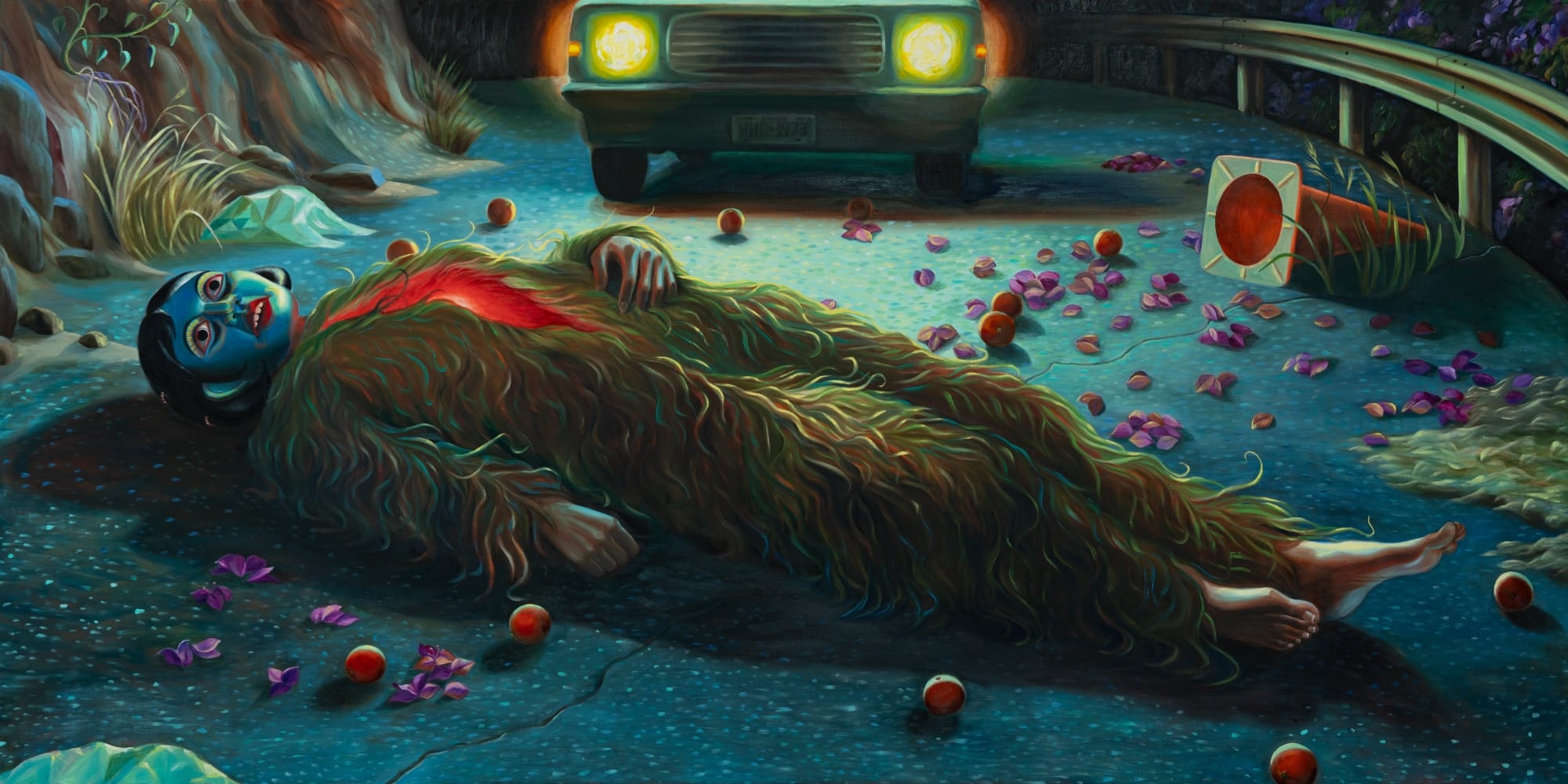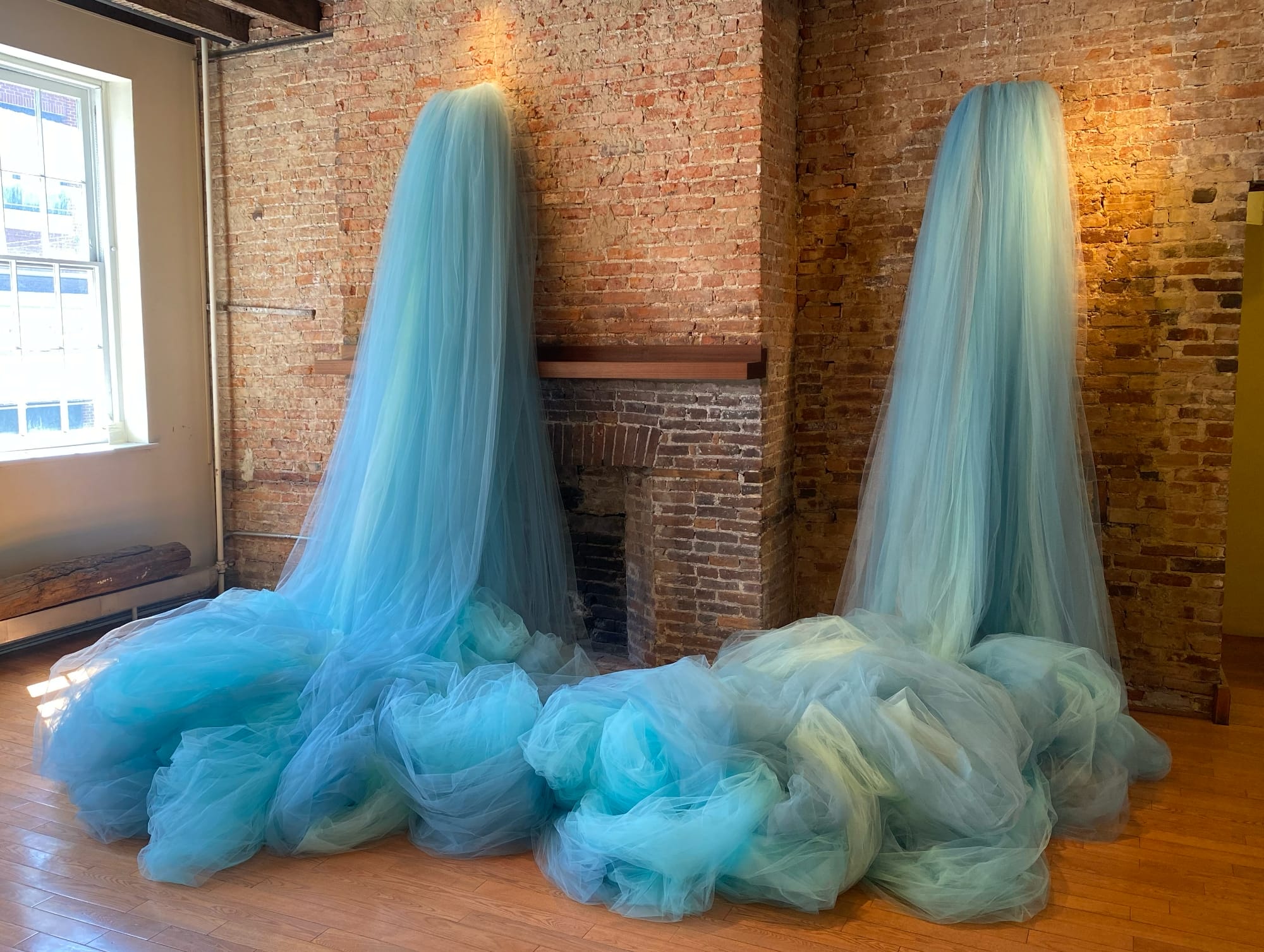When Shyama Golden would find herself disappointed as a child, her parents would often respond with “too bad, so sad, maybe next birth.” Invoking reincarnation and the possibilities of an alternative life, this phrase continues to reinvent itself in Golden’s practice.
On view next month at PM/AM, Too Bad, So Sad, Maybe Next Birth presents a collection of lush paintings filled with surreal details, earthly textures, and a recurring blue-faced character. As with earlier series, the artist invents a vast, magical narrative that flows through each of the works, this time as a four-act performance.

The mythical storyline unfolds with a collection of diptychs comprised of a large-scale scene and a close-up companion offering another perspective. These pairings visualize a sort of alternative past for the artist as she explores the inexorable twining of personal agency and larger forces like fate and collective experiences that shape our identities.
In Too Bad, So Sad, Maybe Next Birth, Golden opens with her blue-faced alter ego named Maya, a rendition of the Sri Lankan folklore tricksters known as yakkas. Dressed in a fur suit, the character lies in the roadway, her chest split open to reveal a bright red wound. A bag of oranges is littered nearby.
The counterpart to this titular work is a self-portrait of the artist barefoot, posed against the rocky roadside. She stands atop cracked pavement while oranges spill blood-red juice on the ground. Introspective yet invoking the universal, the pair grasps at the tension between unexpected violence and death, whether metaphoric or real, and the ability to find resilience in the face of adversity.
Golden’s series continues to unravel as a series of contrasts. She considers fame, erasure, and where freedom resides within the two, along with the notion of sole creative geniuses mistakenly thought to operate outside the whole. And in “Mexican Texas, 1862,” the artist tackles the porous, if not arbitrarily drawn, boundaries that tie us to states and nations and ultimately, change over time.

In addition to her oil paintings for this exhibition, Golden is collaborating on an animated video project with her husband, the director Paul Trillo, who will build an AI model trained exclusively on Golden’s paintings. Given the hesitation by many artists about the role of artificial intelligence and intellectual property, the pair is interested in confronting the issue from the perspective of influence and the myth of the lone genius. Golden writes:
Many artists who are canonized are actually working in a style that they didn’t invent but that was part of a movement arising out of their time and location. AI is deeply unsettling to artists in the West because we romanticise the artist as a singular figure, who is only influenced by one to three other clearly defined artists, giving them a lineage of artistic inheritance and perceived value.
Golden also ties this idea to “the clout needed to command a price for our work,” which she suggests is simply another narrative device in the act of self-mythologizing.
If you’re in London, Too Bad, So Sad, Maybe Next Birth runs from May 23 to July 1. Find more from Golden on her website and Instagram.













